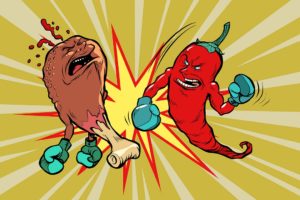I’m in seventh heaven when I’m writing or playing word games. More outgoing people would rather be shaking their booty on the dance floor, matching winning symbols on a slot machine, or sightseeing in Spain. They’d probably think my idea of bliss is as boring as watching a leaky faucet. The aforementioned activities are an enjoyable diversion for some, but not for me. I dance like a wooden soldier. I dislike having one-armed bandits gobbled up my money with little or no return, and flying anywhere has been removed from my bucket list. (I’ve replaced flying with plans to be an audience member on The View one day. I’d take the train to the Big Apple.). On the contrary, this logophile is enthusiastically into word games. It doesn’t matter if the game is Scrabble, Wordle, or my favorite online game, Puzzly Words.
Sometimes just for fun, I create my own word games or anecdotes using crafty phrases.
For instance, about four months ago, Gertrude Stein’s expression, “there is no there there,” was being volleyed like a hot potato by politicians and commentators mimicking them. I was so intrigued by the phrase that I created an imaginary conversation between two friends trying to outwit each other using Stein’s expression. Listen to Karen and Becky.
Becky: Stein was right, you know, there is no there there; nowhere.
Karen: Of course, there is a there there. Everywhere.
Becky: Where?
Karen: Depending on the viewer’s perspective, there can be here or in that place. Where? There.
Becky: Where can’t be there because there is no there there.
Karen: Au contraire. Where indeed can be there.
Becky: I’m telling you, where is nonexistent, and there is no there there.
Karen: But there is there. There is a place nearby, far away, all over.
Becky: There is where?
Karen: There is anywhere and everywhere.
Becky: There can’t be anywhere and everywhere if there is nowhere for there to be.
Karen: I’m telling you there is a there there. Like where — there can be any place.
Becky: Listen, there is no where, and no there.
Karen: So, you believe there is no where and no there? How can I convince you that there is? If I say, let’s walk across the street. You might ask ….
Becky: Why would we be going over ther ….
Karen: Over where? Say it; over there.
Becky: Don’t play with me. Stein had it right; there is no there there.
Karen: Girlfriend, you’ve taken the whole thing out of context. Stein was referring in her autobiography to her childhood home that was gone after she left and returned years later. That’s what she meant by there is no there there.
Becky: I don’t know about that. I just know she’s right; there is no there there and no where.
Karen: If there is no there there nor where, then maybe there is no what either.
Becky: What? Are you making fun of me? Where is this conversation going?
Karen: Didn’t you just say there is no there there and no where?
Becky: This is nonsense.
Karen: Don’t stop now. I’m all for riding this clunker till the wheels fall off.
Becky: Whatever!
Karen: If there is no there there, and no where, what makes you think there is a whatever? Hey, Becky, come back! Where are you going? Don’t stomp away mad.





